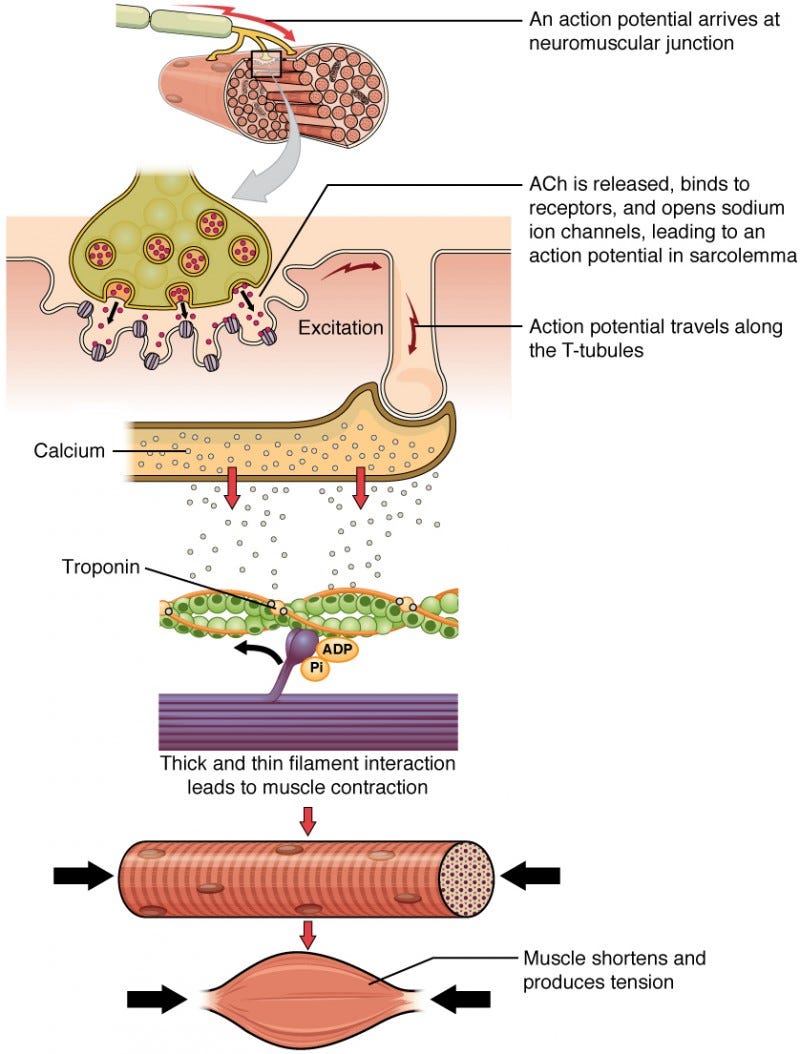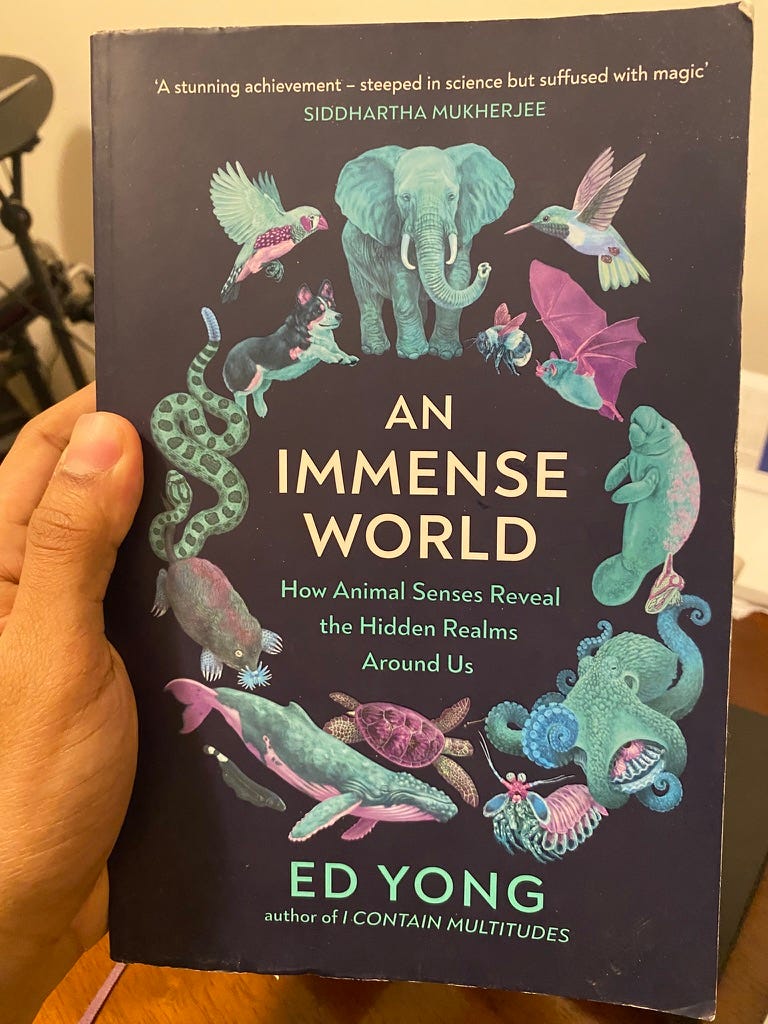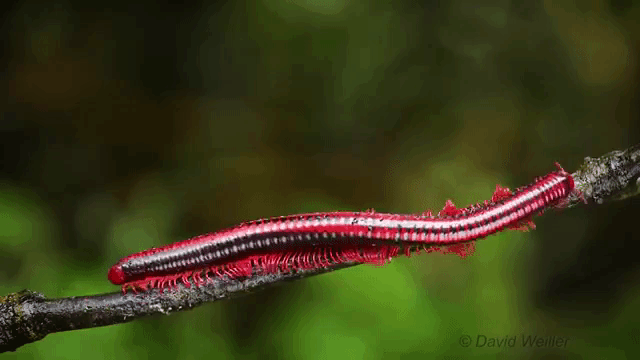An Immense World of Action
Your head is there to move you around
I
One of my favorite reads of last year was Ed Yong's An Immense World:
The book is about the Umwelt of different animals. This strange word refers to the sensory bubble that is shaped by each animal's perceptual capabilities. When a horse, a human, and a hummingbird look at the same scarlet gilia flower, the dichromatic horse sees a mustard yellow, the trichromatic human sees a bright red, while the tetrachromatic hummingbird perceives a mixture of UV and red that is unknown, perhaps unknowable, to humans.
While each animal is limited by what it can perceive, learning about the Umwelt of different animals can give us a glimpse of the overwhelming richness and variety of life. Ed Yong, channeling Marcel Proust, takes us on the ‘only true voyage’:
The only true voyage of discovery would be not to visit strange lands, but to possess other eyes, to behold the universe through the eyes of another, of a hundred others, to behold the hundred universes that each of them beholds, that each of them is. - Marcel Proust
It strikes me that there's another worthy voyage — not of perception, but of action. Just as each animal has its own Umwelt, each has its own Repertoire of movements: the ways in which its biology and environment allow it to act and interact. Try as it might, a snake cannot gallop like a horse. A monkey would find it hard to flex its nose like an elephant does its trunk. None of them can propel themselves in the depths of an ocean by expelling a jet of water like a squid. Only birds, bats, and insects have tasted the euphoria of winged flight, while the rest of us can only walk the earth with our eyes turned skyward1. Some animals can climb, others can crawl, while some others can swim, glide, punch, lift, leap, or sing.

II
Even an action with the same name is instantiated in drastically distinct ways across animals. Consider the walk. A behavior in the arsenal of the human and the horse, the cat and the centipede, the crab and the ostrich. When walking, you tend to have at least one of your limbs on the ground at all times. Typically, you alternate between your limbs in a coordinated manner. Humans walk with a bipedal gait where our two legs alternate, half a stride out of phase with each other. Our left foot leaves the ground once the right heel strikes.
For a quadruped like a horse, its four limbs are one-fourth of a stride out of phase. If a horse starts with the left hind leg striking the ground, the left front strikes the ground next, followed by the right hind and then the right front. However, this isn’t the only type of four-limbed locomotion. Look at a human baby crawling, and you’ll notice that they tend to pair their diagonal limbs. The left arm and right leg move almost together, followed by the right arm and left leg. Horses also adopt a similar pattern when they trot, a gait they use when moving slightly faster than a walk2. Move even faster and we get into the territory of running where nature has devised brilliant gaits suited to each animal’s need, be it humans, horses, cheetahs, or elephants.
At first pass, a vague sense of symmetry suggests that walking ought to involve an even number of limbs. A fascinating counter example is the Kangaroo’s pentapedal gait. Known for its energetic hop, this marsupial also has a slower gait where it uses its two powerful hindlimbs, two smaller forelimbs, and its tail! First, it rests its body on its forelimbs and its tail, then it swings its hindlimbs forward before adjusting its forelimbs and tail for the next step. Its muscular tail is not simply there for support. It’s in fact doing the lion’s share of the work in propelling the animal forward.

But what if we are interested in the most popular way of walking? Then it is neither horses nor humans nor kangaroos we should turn to but insects, since they easily outnumber the rest of us in this walking race. Many six-legged insects, like certain types of cockroaches, ants, and fruit flies adopt a tripod gait. At each instance, three of its legs are on the ground while the other three swing forward in unison, strangely reminiscent of a human walking.
Consider, finally, the leggiest of all animals - the millipede. Discovered at a depth of 60 meters in a drill hole made for mineral exploration in the Goldfields of Western Australia, the current world record holder is a millopede called Eumillipes Persephone with a whopping 1306 legs! The way most centipedes and millipedes walk is with a metachronal rhythm. Think of a mexican wave starting from one end of its body and travelling to the other, lifting each leg up on its way to propel the insect forward.
Starting from two legs and going all the way to a thousand, think of all the ways that one can walk!
III
Yet, this is not simply a story of diversity. There are striking similarities in the ways that different animals express themselves. Evolution has preserved a few key moves across many distant cousins. My personal favorite is the wet dog shake.
Drench a dog in water and, soon enough, it will start rapidly rotating its body to shake off the water. This whimsical but efficient drying technique is not only a part of the dog’s repertoire, but also of mice, rats, cats, bears, and most other furry mammals. But even within this similarity lie lawful differences: the frequency at which an animal shakes scales with its size. Smaller animals, like mice, shake at higher frequencies (~30Hz), whereas larger animals, like bears, shake at lower frequencies (~4Hz). Each animal balances the energetic cost of shaking against the benefits of quickly getting dry.
As Haldane wrote in his essay ‘On being the right size’: “For every type of animal there is a most convenient size, and a large change in size inevitably carries with it a change of form” - and, as we can see, a change in function.
Another wonderful tale of similarity is that of the Elephant and the Octopus.
These two animals are worlds apart. A terrestrial vertebrate with four legs and an aquatic invertebrate with eight arms. One weighs around 500 times the other. A billion years of evolution separate their lineages. But they have something in common: they are both proud owners of highly dextrous muscular hydrostats. The trunk of an elephant and the arms of the octopus are boneless structures that are flexible throughout their entire length. Such an appendage comes with its own perplexing challenge. Imagine you’re reaching out to grab a cup of coffee. To achieve this, you (i.e. your brain) has to select from a very large number of potential paths that your arm can trace out in getting to the cup. Even if you manage to pick a path, you then need to choose from a large space of possible muscle activations to carry out the same action. This “redundancy” problem becomes infinitely harder for hydrostatic organs, since, unlike a human arm that can only be bent at the elbow and will always have a fixed length, a hydrostat can be bent and stretched at any point and can even change its total length. These hydrostats essentially have infinite degrees of freedom. How come the elephant doesn’t succumb to debilitating analysis paralysis each time it has to lift its trunk?
It turns out that both the octopus and the elephant use ‘motor primitives’ - simple, stereotyped movement patterns - that can be combined in different ways to carry out a wide range of tasks. Both animals show similar behaviors, like the formation of virtual joints when moving from point to point and the propagation of bends through the trunk or the arm when reaching for a target. This similarity is even more surprising when we think of the distinct nervous systems that are controlling these behaviors: a centralized cerebral motor cortex along with a massive cerebellum in the elephant versus a decentralized nervous system, almost independent of the brain, located mostly in the arms of the octopus.
IV
“To move things is all that mankind can do, for such the sole executant is muscle, whether in whispering a syllable or in felling a forest” - Charles Sherrington

Whether it’s a horse’s gallop, a human’s speech, a dog’s shake, or an elephant’s reach, ultimately it is a result of the work done by the sole executant: muscle. Learning about the way a single muscle contracts is yet another reminder of why I should have loved biology. When you see biology the way biologists do, it's dramatic, theatrical. In many animals, the control of movement begins somewhere in the central nervous system. Sitting in the spinal cord, a motor neuron sends out an electrical command, an impulse that travels to a specific recipient somewhere in the body. The impulse reaches the muscle and makes its way to a muscle fiber made up of bundles of filaments- thick ones called myosin and thin ones called actin. It orders the release of acetylcholine, which in turn opens the floodgates of calcium, which then seduces a protein called troponin convincing it to give up yet another protein it is holding hostage called tropomyosin. The overcast days of troponin and tropomyosin give way to sunny days for the actin and myosin to join and rejoice. Then the action occurs. The myosin head burns its ATP and does a power stroke, pulling the actin with all its might. As these filaments slide past each other, the muscle contracts.
Unaware of all this drama, I reach for a cup of coffee.
In a fraction of a second, my body converts energy from one form to another multiple times. This process of transduction never fails to amaze me. Photons entering my eye set off cascades of signals made of electricity then chemistry and back to electricity, eventually pushing molecular motors to do mechanical work!3
V
There is a larger principle that underlies these discussions of diversity and similarity in movements: the centrality of action to life. To be alive is to move. Everything that we do — our amazing sensory abilities to see, hear, smell, touch, and feel, our capacity for thought, memory, imagination, and reasoning — all of it is ultimately in service of action. Of what use is knowing that an apple looks delicious if you can’t bite into it? To quote Sherrington again: “Life’s aim is an act, not a thought”.
Indeed, it has been argued that the brain’s aim might be to act. The neuroscientist Daniel Wolpert starts his talk on how the ‘real reason for brains’ is motor control with the example of a sea squirt:
“Rudimentary animal, has a nervous system, swims around in the ocean in its juvenile life. And at some point of its life, it implants on a rock. And the first thing it does in implanting on that rock, which it never leaves, is to digest its own brain and nervous system for food. So once you don't need to move, you don't need the luxury of that brain.”
This tongue-in-cheek story might point to a deeper truth about the way brains work. The harder we look, the more it seems like there are movement signals almost everywhere in the brain, even in regions that were previously thought to be purely concerned with sensation. Who knows, maybe the whole prefrontal cortex is pre-motor cortex. Maybe your head is there to move you around.
VI
Grappling with the variety of motor repertoires forces us to realize that we humans only get to explore a tiny subspace in the space of all actions. It is our desire to peek into the unexplored orthogonal dimensions that explains why animal behavior has always been one of the main subjects of human curiosity. Investing in our interest in animal movements has paid off handsomely4. Our curiosity to learn about the gallop of the horse that gave us the first movie. Our fascination with birds inspired our initial excursions in mastering flight. Our quest to understand the cortical control of volitional movements paved the way for brain computer interfaces to restore volitional motor control in paralyzed humans. But we didn’t set out with these goals in mind. We studied animals because we felt compelled to. Because there’s something magnetic about the way they move that draws us in. We are all naturally naturalists.
![Screen Recording 2025-04-23 at 10.30.36 PM.mov [video-to-gif output image] Screen Recording 2025-04-23 at 10.30.36 PM.mov [video-to-gif output image]](https://substackcdn.com/image/fetch/$s_!-vkQ!,w_1456,c_limit,f_auto,q_auto:good,fl_lossy/https%3A%2F%2Fsubstack-post-media.s3.amazonaws.com%2Fpublic%2Fimages%2F855c3707-6b39-491b-8fbb-2ee9e21e8fad_800x218.gif)
In his Nobel lecture, Nikolaas Tinbergen exalted the merits of the grand old tradition of ‘watching and wondering’ about animals and proudly identified himself as a ‘mere animal watcher’.
I suggest we all participate in this grand old tradition. Maybe if we watch and wonder at the ways animals move for long enough, we’ll start to understand a little of what they’re trying to say. Like many before us, we too can seek out Solomon’s ring5.
There was never a King like Solomon
Not since the world began;
But Solomon talked to a butterfly
As a man would talk to a man.
- Rudyard Kipling
There is much to learn about animals, and there is much to learn from them.
While I’ve raved here about the beauty of action, I’m an equally big fan of sensation. My last two posts were on how we understood the biological basis of color vision from clever behavioral experiments and about the discovery of the blind spot.
Please let me know if you spot any errors or if you have any feedback.
This phrase is a reference to a (likely misattributed) quote by Da Vinci: “Once you have tasted flight, you will forever walk the earth with your eyes turned skyward, for there you have been, and there you will always long to return.”
While both baby crawls and horse trots have diagonal coupling of limbs, they have different rhythms and support patterns. Babies, especially early on, typically have 3 limbs on the floor at all times while a trotting horse can make do for portions of its trot with just 2 or sometimes no limbs.
I’ve grossly oversimplified and taken some poetic liberty here. I was hesitant to do so. If you’re interested, here’s a more detailed and accurate description of how muscle contraction works. Here’s another nice one.
Inspired by Konrad Lorenz’s book also called Solomon’s Ring which refers to the fable of the magical ring that gave King Solomon the power to speak the language of animals. Lorenz and Tinbergen (and Karl von Frisch) shared the Nobel Prize for medicine in 1973.
Other image credits:
Horse walking gait: https://grahameq.org/2020/06/5347/
Insect tripod gait: https://genent.cals.ncsu.edu/bug-bytes/thorax/locomotion/
Octopus: Roy Caldwell, via UC Berkeley
Millipede - David Weiller









![Screen Recording 2025-04-23 at 10.48.52 PM.mov [video-to-gif output image] Screen Recording 2025-04-23 at 10.48.52 PM.mov [video-to-gif output image]](https://substackcdn.com/image/fetch/$s_!W-B6!,w_1456,c_limit,f_auto,q_auto:good,fl_lossy/https%3A%2F%2Fsubstack-post-media.s3.amazonaws.com%2Fpublic%2Fimages%2F3a304e20-59be-49e5-81a3-89ca66f052ff_794x346.gif)
